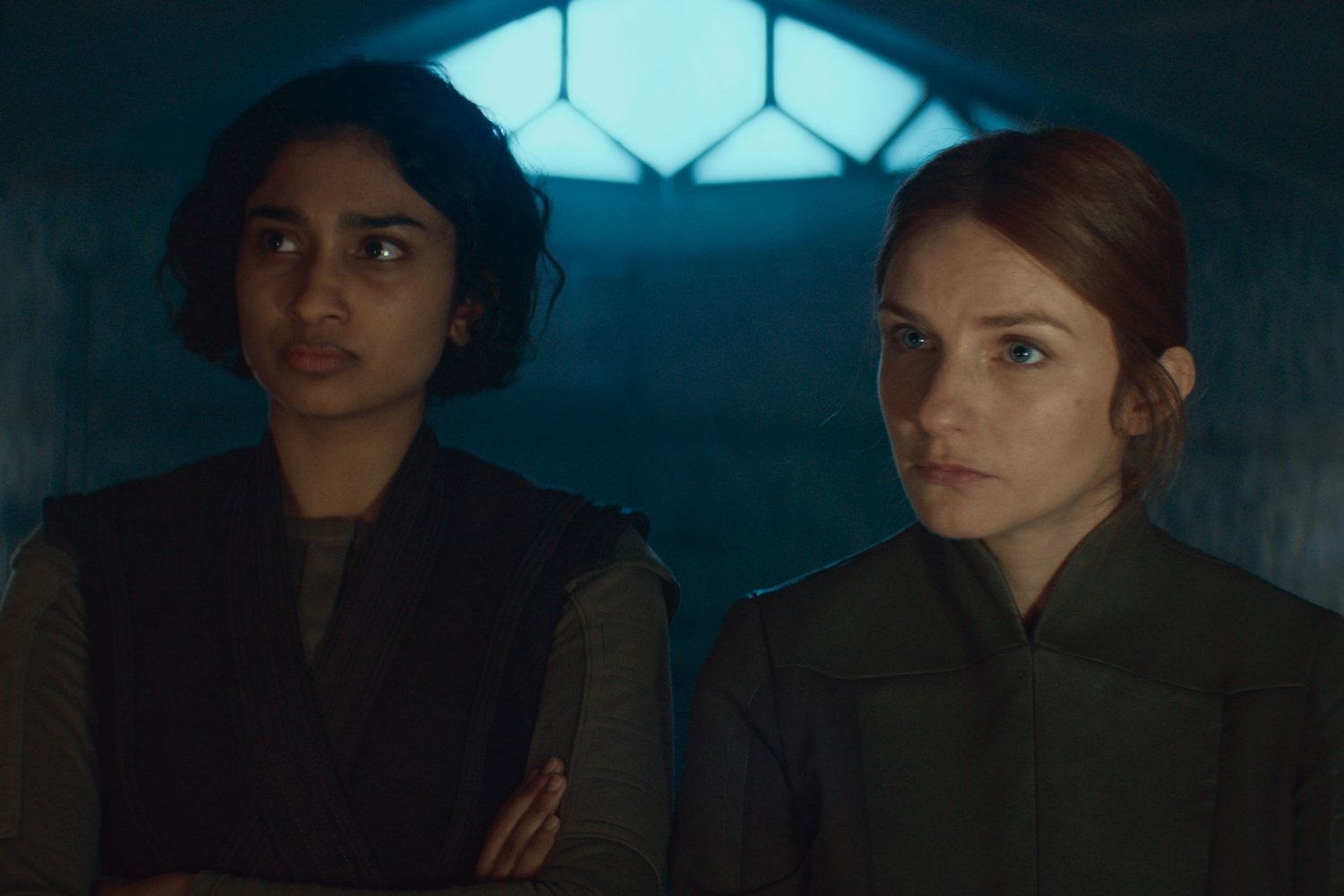
The Price of Rebellion: Andor, Cinta, and the Complexities of Queer Representation
Andor’s second act brought with it a narrative tapestry woven with political intrigue, moral compromises, and the simmering embers of rebellion against the Galactic Empire. Among the many threads meticulously crafted, the reunion of insurgent lovers Vel Sartha and Cinta Kaz stood out, offering a glimpse of intimacy and personal stakes amidst the grand theater of galactic conflict. As part of Luthen Rael’s relentless efforts to gauge resistance sentiment on Ghorman, Vel and Cinta found themselves thrust back into each other’s orbit after years of separation, their reunion serving as a poignant counterpoint to the cold calculations of the rebellion.
Their relationship, already subtly portrayed as queer in the first season, blossomed into a more explicitly romantic portrayal. Their time together on Ghorman provided a space for reflection on their dedication to Luthen and the growing Rebellion. This culminated in a tender moment of connection, undeniably a landmark in Star Wars’ on-screen representation of queer intimacy. However, this moment of happiness was tragically short-lived.
The Ghorman resistance, a ragtag group comprised of anxious and unprepared individuals, proved to be a volatile element. During an attempt to seize Imperial weaponry, an accidental blaster discharge, triggered by a dispute between a guerrilla named Samm and a local Ghor, struck Cinta, killing her instantly. The suddenness of her death, punctuated by the casual brutality of a stray bolt, sent ripples of grief and despair through the narrative.
The aftermath of Cinta’s death resonated deeply, particularly in Vel’s anguished reaction. Rather than succumbing to immediate vengeance, Vel, in a display of steely resolve, burdened Samm with the weight of Cinta’s death, a greater pain than a swift execution could inflict. This dramatic moment, while expertly executed, nevertheless raised critical questions about representation.
The "Bury Your Gays" trope, a long-standing criticism of media’s tendency to kill off LGBTQ characters, loomed large. The trope suggests that queer characters are introduced solely to fulfill diversity quotas, only to be discarded for shock value, devoid of meaningful character arcs. In a franchise like Star Wars, which has historically lagged behind in on-screen queer representation, the loss of Cinta felt particularly acute. While strides have been made in other mediums like comics and novels, Star Wars remains, for many, a franchise primarily defined by its films and television series. The fleeting sapphic kiss in The Rise of Skywalker serves as a stark reminder of the franchise’s often-superficial attempts at inclusivity. Vel and Cinta were arguably the most prominent on-screen LGBTQ characters in the Star Wars universe in recent years, rendering Cinta’s death a potentially harmful setback.
Despite the initial concerns, Andor avoids succumbing to mere shock value. Cinta’s death is presented with significant gravitas, deeply interwoven with the central themes of sacrifice and the harsh realities of resistance. Her death isn’t a triumphant sacrifice for the cause. Instead, it’s a brutal reminder that revolution is not a sanitized narrative of heroism. It is often messy, sudden, and heartbreakingly unfair. Cinta’s death served as a brutal lesson for the Ghorman Front, for Vel, and for the audience: resistance is not a cost-free endeavor.
The show also explores the complexities of interpersonal relationships amidst the backdrop of rebellion, with Vel and Cinta’s relationship acting as a significant lens through which to examine the ethical dilemmas of resistance. Crucially, their queerness is not the sole defining aspect of their characters or their relationship. Unlike the tokenistic gesture in Rise of Skywalker, Andor develops Vel and Cinta as complex individuals with distinct personalities, motivations, and flaws. Their queerness is an integral part of their identity, but it doesn’t overshadow the other facets of their being.
Andor’s portrayal of Vel and Cinta, while not without its controversial elements, ultimately treats them with the same narrative complexity and vulnerability as other characters. Their inclusion in the narrative fabric of Andor grants them the narrative right to be jeopardized, to face tragedy, and to grapple with moral ambiguities. They are allowed to be messy and imperfect, a critical step towards genuine representation.
While the loss of a queer character inevitably stings, especially within a franchise still striving for inclusivity, Andor subverts expectations by not treating Cinta or Vel as merely representative figures. They are not shielded from the inherent dangers of their world simply because of their sexual orientation.
The show acknowledges that characters, regardless of their identity, can face danger, experience loss, and grapple with the complexities of war. Ultimately, Andor avoids reducing its queer characters to symbolic representations. They are active participants in the story, shaping the narrative and impacting the lives of those around them. While Star Wars undoubtedly needs more prominent queer characters, that representation must extend beyond mere visibility. It needs to encompass the full spectrum of human experience, including joy, sorrow, triumph, and tragedy.
Andor’s decision to put Vel and Cinta in harm’s way, to allow them to experience tragedy, is a testament to the series’ commitment to treating them as more than just checkboxes on a diversity checklist. Their story is a complex, nuanced exploration of love, loss, and the price of rebellion. It’s a story that deserves to be told, even if it is a painful one, because it pushes the boundaries of representation and invites audiences to confront the uncomfortable realities of war. The show offers more than a fleeting, easily discarded queer moment; it provides a tangible demonstration of character.
